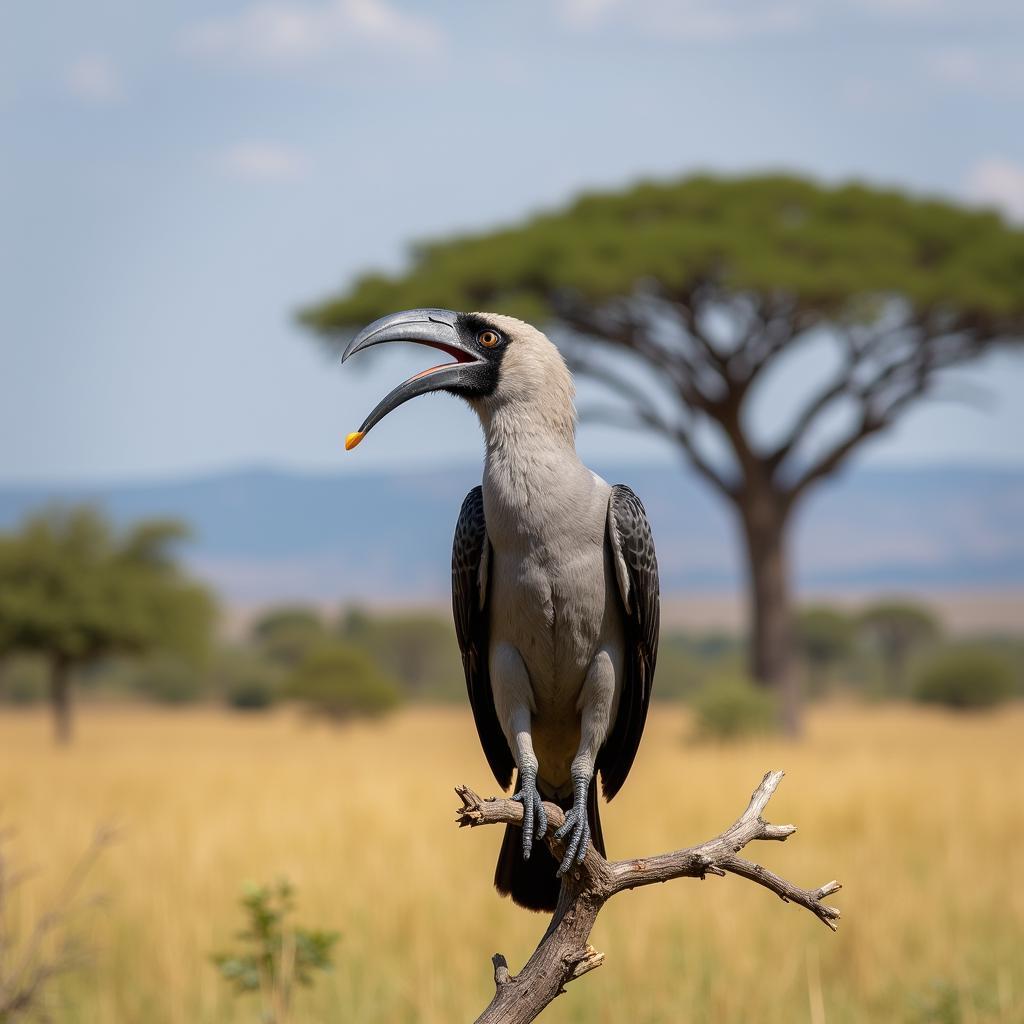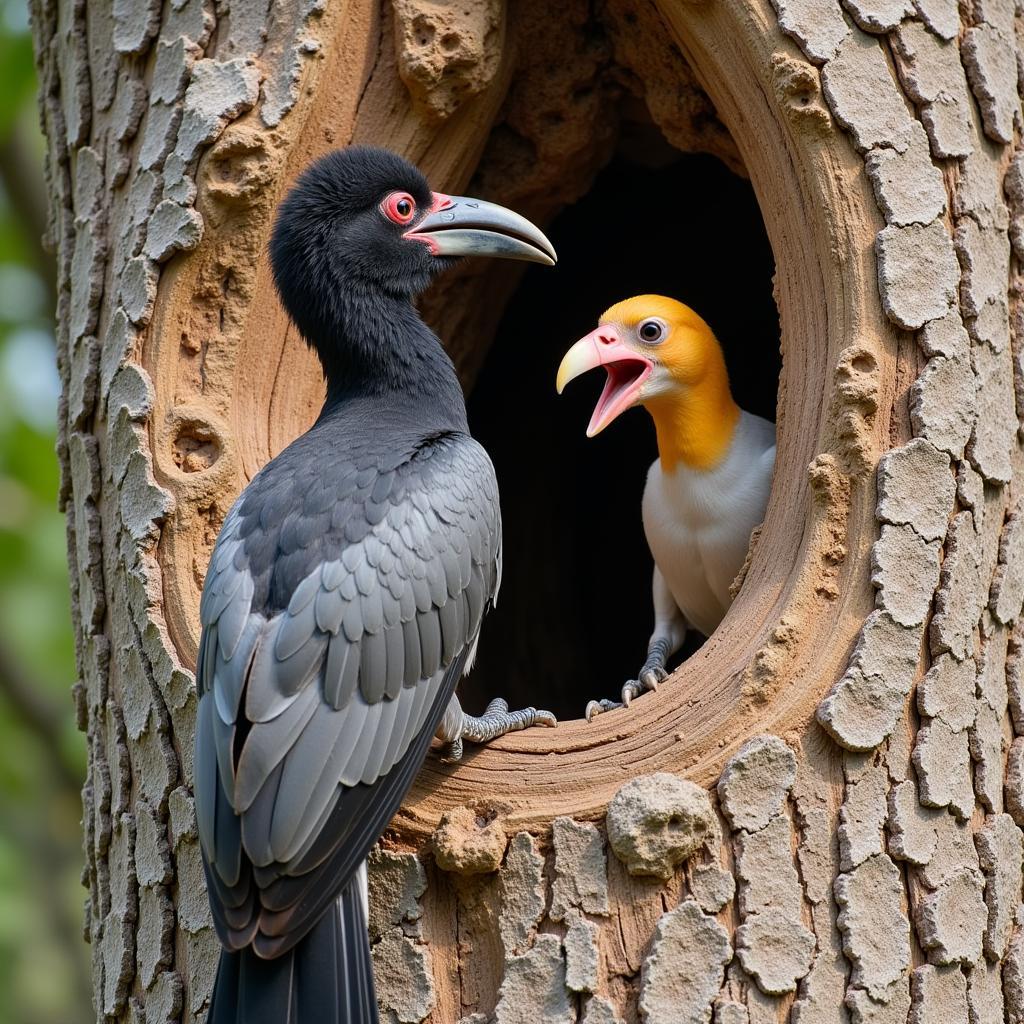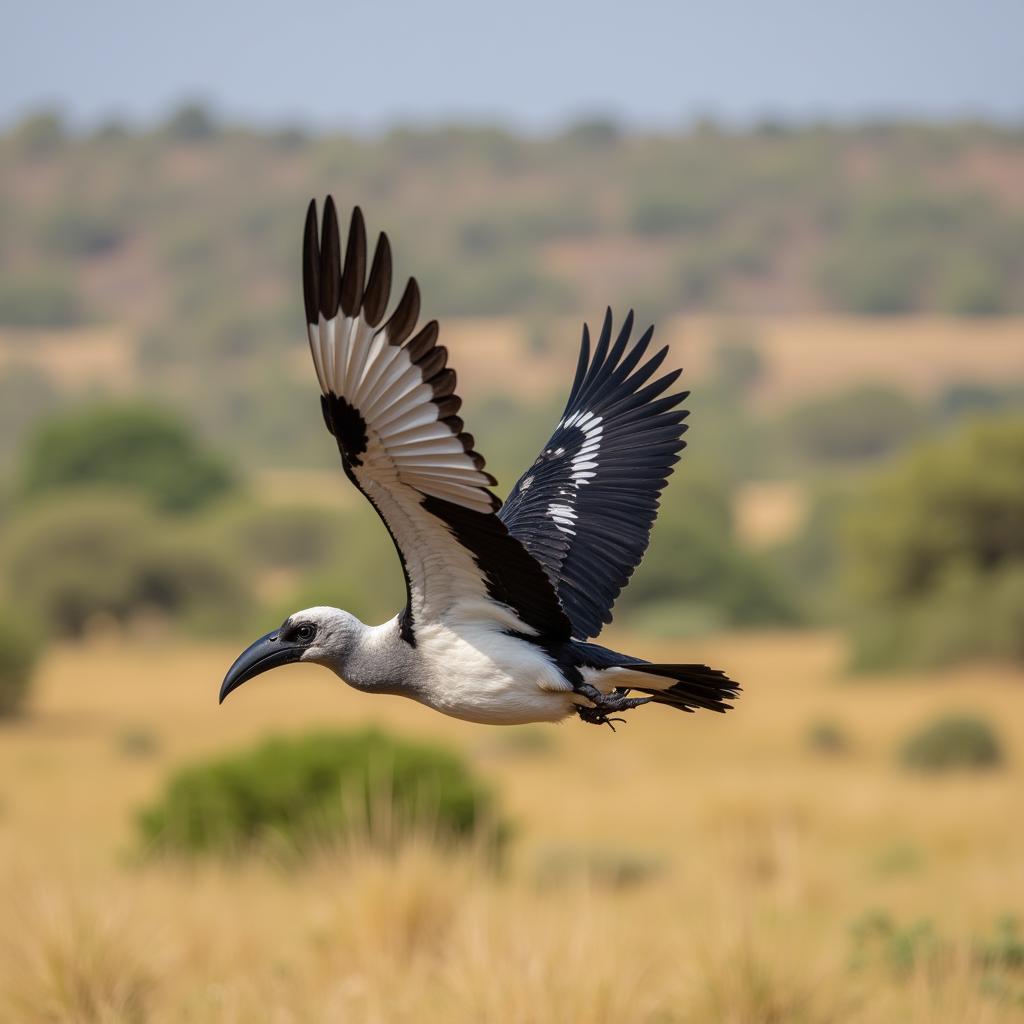The Majestic African Grey Hornbillbird: A Symbol of the Savannah
The African Grey Hornbillbird, a remarkable creature of the African savannah, stands as a testament to the continent’s rich biodiversity. Its distinctive call and striking appearance make it an iconic symbol of the African wilderness. This article delves into the fascinating world of the African grey hornbillbird, exploring its habitat, behavior, diet, and significance in African culture.
Understanding the African Grey Hornbillbird
The African grey hornbillbird ( Tockus nasutus ) is a medium-sized bird belonging to the hornbill family, Bucerotidae. They are easily recognizable by their large, curved grey beak, which, despite its impressive size, is surprisingly lightweight due to its honeycomb structure. Their plumage is primarily grey and brown, with white underparts and distinctive white markings on the wings and tail. While often found in pairs, they can also congregate in larger flocks, especially around fruiting trees. Their calls, a series of loud, resonating “wok” sounds, are a familiar sound of the African bush.
The African grey hornbillbird occupies a vital role in its ecosystem, contributing to seed dispersal and insect control. Their diet consists primarily of fruits, insects, and small reptiles. They are highly adaptable birds, thriving in various habitats across the African continent.
 African Grey Hornbillbird Perched on a Branch
African Grey Hornbillbird Perched on a Branch
Habitat and Distribution of the African Grey Hornbillbird
The African grey hornbillbird is widespread across sub-Saharan Africa, inhabiting a diverse range of environments from open woodlands and savannahs to riparian forests and even urban areas. Their adaptability allows them to thrive in areas with varying levels of rainfall and vegetation. They are particularly fond of areas with large trees, which they utilize for nesting and roosting.
While they can be found across a wide geographical range, they are absent from the dense rainforests of Central Africa and the arid deserts of the Sahara. Within their preferred habitats, they are often found near water sources, as they require regular access to water for drinking and bathing.
The Unique Breeding Behavior of the African Grey Hornbillbirds
One of the most fascinating aspects of the African grey hornbillbird’s life cycle is their unique breeding behavior. During the breeding season, the female seals herself inside a tree cavity, using mud and droppings to create a small opening. The male then takes on the responsibility of feeding the female and chicks through this small opening until the chicks are ready to fledge. This remarkable display of parental care is a testament to the strong bond between the breeding pair.
 Male African Grey Hornbillbird Feeding Female in Nest
Male African Grey Hornbillbird Feeding Female in Nest
The Importance of Conservation Efforts
The African grey hornbillbird, while currently not considered endangered, faces increasing threats due to habitat loss and human encroachment. Conservation efforts are crucial to ensuring the long-term survival of this iconic species. Protecting their natural habitats and promoting sustainable land management practices are essential steps in preserving the biodiversity of the African savannah.
African Grey Hornbillbird in African Culture
The African grey hornbillbird holds a significant place in the folklore and traditions of various African cultures. In some communities, it is viewed as a symbol of good luck and prosperity, while in others, its call is believed to carry messages from the spirit world. Its prominent presence in traditional stories and rituals highlights its importance within the cultural landscape of Africa.
Dr. Adebayo Olufemi, a renowned ornithologist specializing in African birdlife, emphasizes the cultural significance of the hornbill: “The African grey hornbillbird, with its striking appearance and resonant call, has captured the imagination of African communities for generations. It is deeply interwoven into the fabric of their cultural narratives and serves as a powerful symbol of the natural world.”
 African Grey Hornbillbird in Flight Across Savannah
African Grey Hornbillbird in Flight Across Savannah
Conclusion
The African grey hornbillbird, a magnificent symbol of the African savannah, plays a vital role in its ecosystem and holds a significant place in African culture. Understanding and appreciating this remarkable bird is crucial for promoting conservation efforts and preserving the rich biodiversity of the African continent. Let’s continue to learn about and protect the African grey hornbillbird for generations to come.
FAQ
- What does the African grey hornbillbird eat?
They primarily eat fruits, insects, and small reptiles. - Where do African grey hornbillbirds live?
They are found across sub-Saharan Africa in various habitats, excluding rainforests and deserts. - How do African grey hornbillbirds breed?
The female seals herself in a tree cavity, and the male feeds her and the chicks. - Are African grey hornbillbirds endangered?
They are not currently endangered but face threats from habitat loss. - What is the cultural significance of the African grey hornbillbird?
It is often seen as a symbol of good luck and features prominently in African folklore. - What is the scientific name of the African Grey Hornbillbird?
Tockus nasutus is its scientific name. - What sound does the African Grey Hornbillbird make?
They make a series of loud “wok” sounds.
Related Questions
- What other types of hornbills are found in Africa?
- How does habitat loss affect African bird populations?
- What are the conservation efforts being undertaken to protect the African grey hornbillbird?
Need support? Contact us 24/7: Phone: +255768904061, Email: [email protected], or visit us in Mbarali DC Mawindi, Kangaga, Tanzania.


